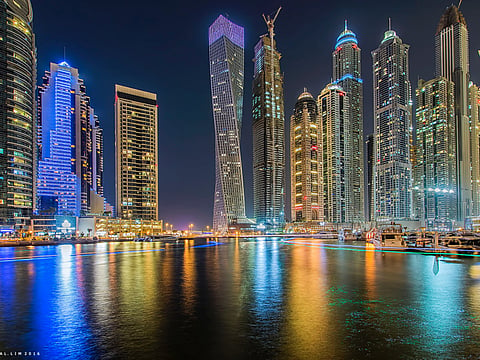Do we need new economic measures for business activity after COVID-19?
Consumption patterns and nature of business activity have altered

The Purchasing Managers’ Index (PMI) is the go-to indicator to understand whether an expansion, a contraction, or no change has taken place in a country’s economy during a particular month. Theoretically speaking, the PMI could be indicative of whether an economy is on its way to recovery or not.
This is important when dealing with a pandemic and its aftermath as it captures, for example, what is happening in the manufacturing and the services sectors of an economy.
Measured monthly by IHS Markit, the PMI is calculated by compiling data from “more than 40 economies” and presented on a scale from 0 to 100. The number 50 is used as a benchmark figure, whereby a drop from 50 in the following month means that a contraction took place in the economy.
Either side of 50
A figure higher than 50 in a following month, or achieving 50 again from a figure below 50, means that economic conditions are improving and the economy is on its way to recovery, and possibly expansion too.
There is no doubt here that the PMI is probably one of the best indicators out there to grasp market sentiments and economic markers that could point to a future expansion or contraction in an economy. Actually, being able to see this beforehand could help in setting the right policies in place to either build momentum in a future expansion, or to minimise complications from a future contraction.
Yet, the PMI, at least until the dust settles with regard to getting global economic recovery back on track, is not the sole and absolute measure to forecast recovery post a pandemic. Here’s why.
Different sectors of an economy recover differently. The ratio between manufacturing and services, as contributors to Gross Domestic Product (GDP), varies significantly from one country to another. As a result, a country with a sizable manufacturing sector, compared to its services sector, would be expected to recover faster overall.
With COVID-19 particularly, recovery could be witnessed first in exports of medical equipment and hygiene-related products, specifically during the early and middle phases of the pandemic. Also, recovery in the pharmaceutical sector would be faster if there is a sizable industry to manufacture vaccines, for instance.
Who's consuming and what?
In addition to the above, consumption in an economy, whether driven by individuals or businesses, depends on how those individuals and businesses feel about the economy and where it is headed. Therefore, an individual worried about employment prospects and the ability to generate higher income in the future would defer spending to times when economic outlook is clearer… and more optimistic.
Likewise, businesses with a more conservative view would not be interested in investing and re-investing in an economy without the same clarity in terms of economic recovery. The PMI measures the business side of consumption, but not the individual one, even though the latter could be significantly affected by overall business activity and the employment associated with it.
Finally, the closure of businesses, during a recession or a pandemic, is not taken into account when calculating whether an economy is expanding or contracting. To illustrate, a better measure here would be the renewal rate of business and trading licences.
Another more painful measure is canvassing the streets for closed shops and showrooms as well as the prevalence of “to lease” signs. More so for economies where real estate plays a paramount role.
To summarise, the PMI is a vital indicator in assessing expansions and contractions in an economy. This could determine the overall trajectory that an economy is taking. However, and depending on what sector contributes what share of a country’s GDP, other signs in the economy may have a different story to tell about economic recovery and outlook.
The last thought that I want to leave you with: Will COVID-19 bring about other measures of economic expansion and contraction?
Sign up for the Daily Briefing
Get the latest news and updates straight to your inbox










